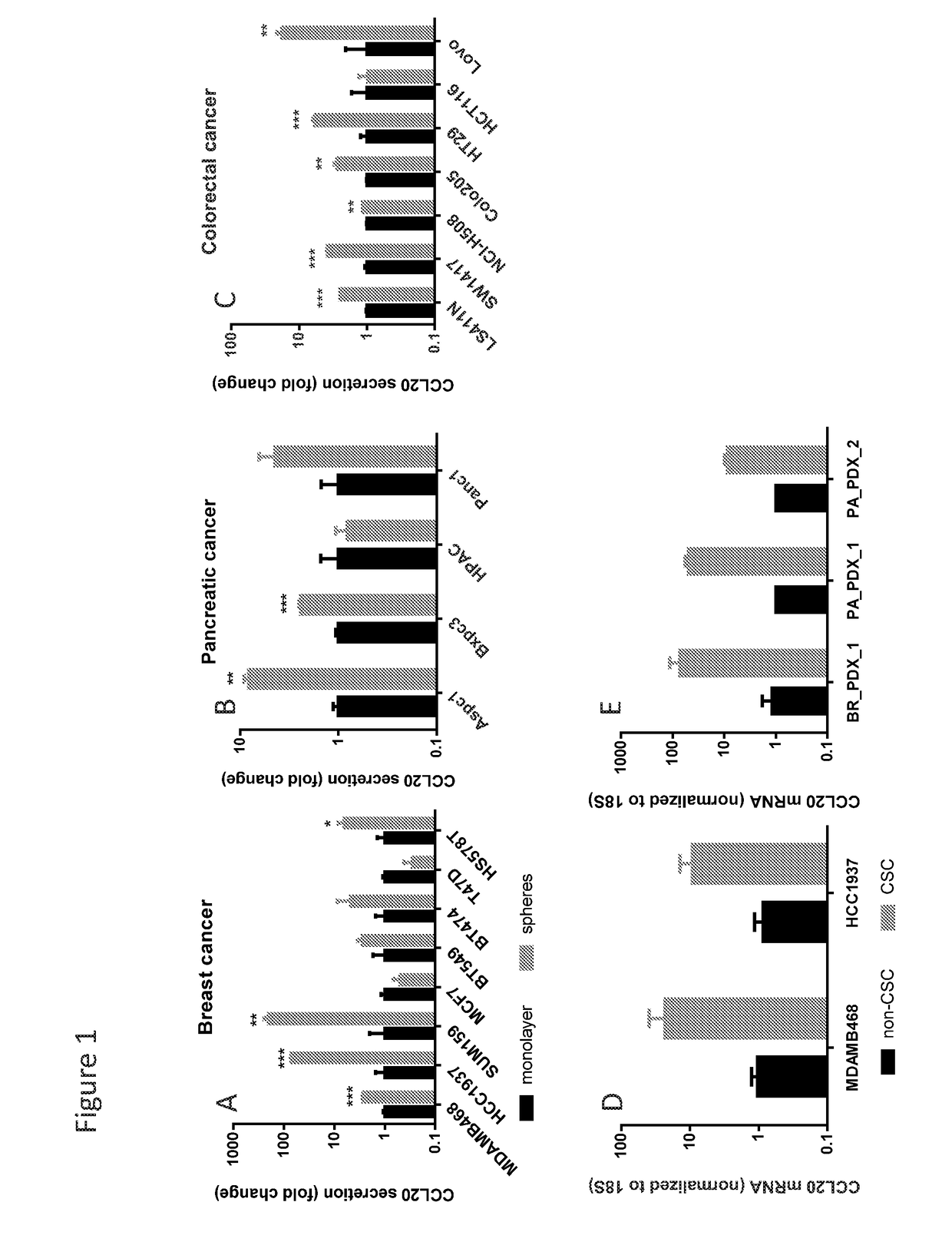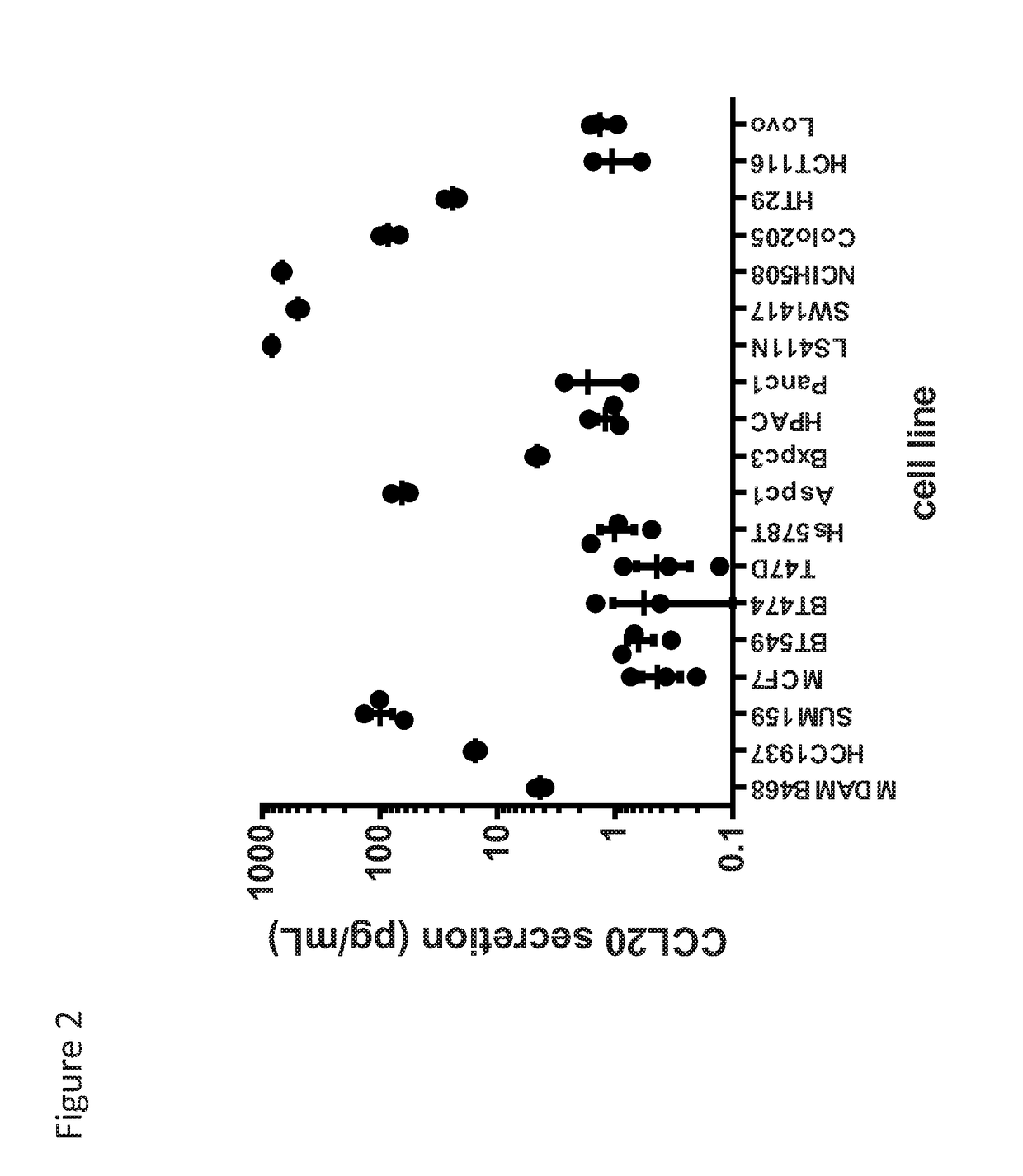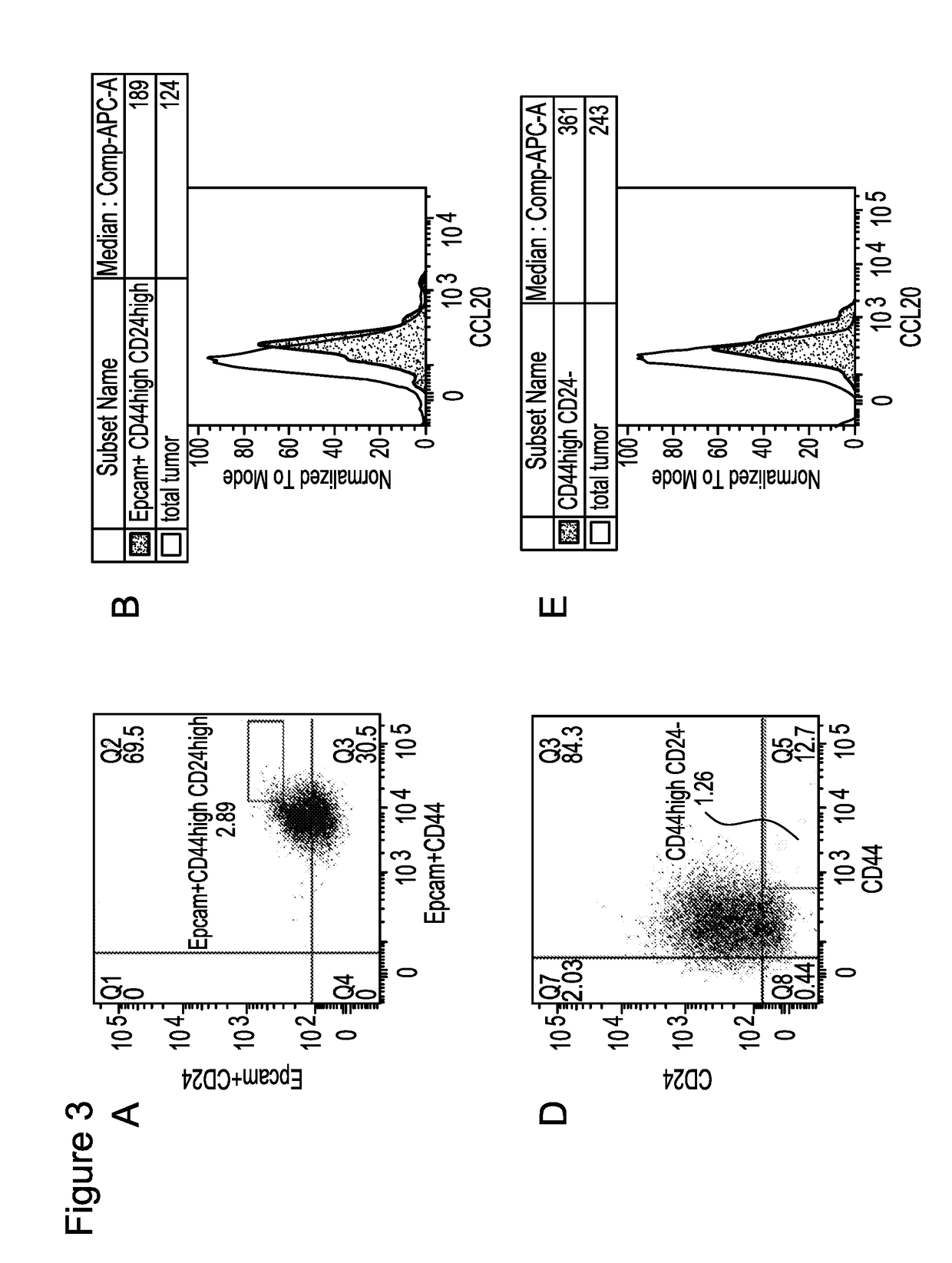Compositions And Methods For Treating Cancer
a cancer and composition technology, applied in the field of compositions and methods for treating cancer, can solve the problems of relapse and potentially metastasis, lack of robust confirmation, and state of the art in this field, and achieve the effects of reducing the ability, and reducing the progression and/or rate of progression
- Summary
- Abstract
- Description
- Claims
- Application Information
AI Technical Summary
Benefits of technology
Problems solved by technology
Method used
Image
Examples
example 1
n of CCL20 in Cancer Stem Cells in Culture
[0185]As discussed above, although CCL20 is known as a chemo-attractant for the recruitment of immune cells, the results discussed herein demonstrate that CCL20 is a factor produced by CSCs in cancer cell lines, some of which are exemplified herein, including breast, pancreatic, and colorectal cancers. In tissue culture, the majority of cell lines are found to profoundly increase secretion of CCL20 when cultured under CSC-enriching sphere conditions relative to monolayer culture conditions (FIGS. 1A-1C). As FIG. 1 shows, sphere culture conditions resulted in a significant increase in CCL20 secretion when compared to monolayer culture in many of the breast cancer lines (FIG. 1A), pancreatic cancer lines (FIG. 1B), and colorectal cancer lines (FIG. 1C) that were tested. Typical levels of CCL20 that were secreted by cells under sphere culture conditions ranged from about 1 to about 1000 pg / mL, whereby cell lines that lacked a CCL20 increase in ...
example 2
on of CCR6 and Co-Localization with CCL20 in Cancer Stem Cells
[0188]Interestingly, when we overlaid the CSC populations with CCL20 / CCR6 staining for the tumor cells, we found that the majority of CSCs from both Bxpc3 and HCC1937 lines appear to co-localize with cells that are double positive for both the ligand and the receptor, ie. CCL20+CCR6+ (FIGS. 3C & 3E). Strikingly, we discovered that sphere culture dramatically increases this double positive CCL20+CCR6+ population over monolayer culture. FIG. 4 illustrates this effect in Bxpc3 and Panc1 pancreatic cancer models. When cultured in standard monolayer, a small fraction of cells in both models are identified as CCL20+CCR6+ (FIGS. 4A & 4C, and FIG. 13 for gating controls). However, when cultured as spheres, the majority of cells in both models stain positive for both CCL20 and CCR6 (FIGS. 4B & 4D). In the Bxpc3 model, this CCL20+CCR6+ population increases from 3.76% (FIG. 4A) as monolayer to 71.2% (FIG. 4B) in spheres. Similarly, ...
example 3
on of CCL20 Levels and Cancer Stem Cell Activity
[0189]Following the confirmation that CCL20 is indeed overexpressed by and associated with the CSC population, we sought to confirm the phenotypic relevance of this molecule to CSC activity. FIG. 5 illustrates how exogenous addition of purified CCL20 boosts sphere growth, which serves as a model for CSC-driven tumorigenicty. The addition of recombinant human CCL20 (rhCCL20) to the CSC culture significantly stimulated sphere growth at day 4 in a dose-dependent manner in three models of cancer, Aspc1 (FIG. 5A), Bxpc3 (FIG. 5B), and SUM159 (FIG. 5C). While the addition of CCL20 causes a dose-dependent increase in sphere growth, the ligand shows no effect on stimulating growth of cells in standard monolayer culture (FIGS. 5A-5C). This observation tends to suggest that the effect of CCL20 is directed specifically toward CSCs. The specificity of this effect was confirmed in FIG. 5D, which illustrates that a 50 pg / mL dose of CCL20 obtained fr...
PUM
| Property | Measurement | Unit |
|---|---|---|
| Electrical resistance | aaaaa | aaaaa |
| Size | aaaaa | aaaaa |
Abstract
Description
Claims
Application Information
 Login to View More
Login to View More - R&D
- Intellectual Property
- Life Sciences
- Materials
- Tech Scout
- Unparalleled Data Quality
- Higher Quality Content
- 60% Fewer Hallucinations
Browse by: Latest US Patents, China's latest patents, Technical Efficacy Thesaurus, Application Domain, Technology Topic, Popular Technical Reports.
© 2025 PatSnap. All rights reserved.Legal|Privacy policy|Modern Slavery Act Transparency Statement|Sitemap|About US| Contact US: help@patsnap.com



